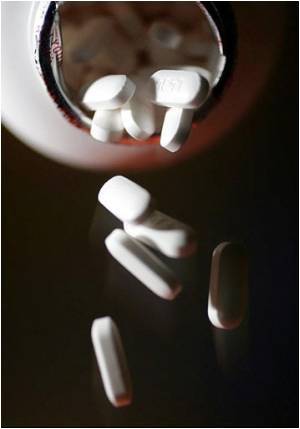Plants could be holding in them at least 500 medically useful chemicals yet to be discovered, according to a new analysis by a New York Botanical Garden scientist.

Currently, 135 drugs on the market are derived directly from plants; the analysis indicates that at least three times as many disease-fighting substances have yet to be found that could be developed into drugs or used as the basis for further drug research.
“Clearly, plant diversity has not been exhausted, and there is still great potential in the plant world,” he said.
Dr. Miller’s analysis, “The Discovery of Medicines from Plants: A Current Biological Perspective,” is published in the December issue of the peer-reviewed journal Economic Botany.
To arrive at his estimate, Dr. Miller used a formula based on the ratio of the number of drugs that have been developed from plants to the number of plants that were screened to find those drugs. He then applied that ratio to the number of plant species that have not yet been screened.
Because of uncertainties in some of those numbers, the formula yields a range of potential drug discoveries. While there is no general agreement among botanists about the number of plant species that are likely to exist, Dr. Miller concluded that there are 300,000 to 350,000 species of plants. Of those, he determined that the chemistry of only 2,000 species has been thoroughly studied, and perhaps only 60,000 species have been evaluated even partially for medicinally useful chemicals.
Advertisement
“These calculations indicate that there is significant value in continuing to screen plants for the discovery of novel bioactive medicinally useful compounds,” concludes Dr. Miller, who has run natural-products discovery programs that have collected specimens in North America, Central and Southeast Asia, and Africa for government agencies, pharmaceutical companies, and academic programs.
Advertisement
Technological advances in the 1970s and 1980s gave medical researchers the capacity to evaluate large numbers of plant samples. The number of drug discoveries, however, was substantially less than anticipated. By the early 2000s, many of the large pharmaceutical companies had abandoned their efforts.
Dr. Miller argues that one possible explanation for the low yield is the relatively crude way in which plant extracts were tested for their pharmaceutical potential. Plants may contain as many as 500 to 800 different chemical compounds, but the screening programs of the late 20th century used extracts made from a whole plant or at best extracts that contained many hundreds of compounds.
Under those circumstances, one compound may interfere with the action of another, or the amount of one compound may be too small to register in a mix of hundreds of chemicals.
To correct this problem, new technologies now allow researchers to separate complex mixtures of natural products into a “library” of relatively pure compounds that can be tested individually. A 2002 study demonstrated that testing such libraries dramatically improves discovery rates.
Bringing these advances together with refinements in collecting strategies could lead to what Dr. Miller calls a “second renaissance” of natural-products discovery.
Miller undertook his analysis to highlight the fact that despite past collecting programs, the plant world represents a poorly explored source of potentially lifesaving drugs. That adds urgency, he said, to efforts to conserve natural habitats so that species are not driven to extinction before they can be studied.
“The natural world has a great and diverse array of interesting chemicals that have been only minimally studied and still hold considerable potential,” he writes.
Source-Medindia






